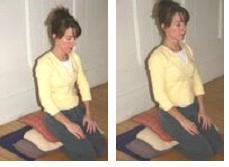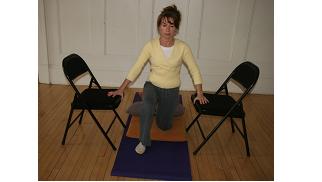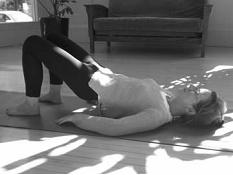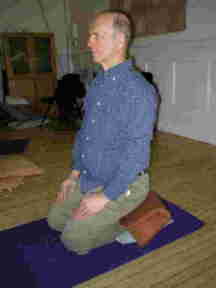Winter is nearly here, a time of shorter days and focusing inward. According to Traditional Chinese Medicine, it is the season of the element water, and the corresponding organs, the kidneys. Taoist master Bruce Frantzis recently offered this advice:
“December is coming, do anything you can to build up your kidneys during the winter season and get a lot of rest. The winter is the time of the regeneration of your body for the rest of the year. And I hope the forces of universe bring this opportunity into your life.”
We can use Longevity Breathing Yoga to relax and open our breathing so that each breath provides a gentle massage to the kidneys. Taking even a few a few minutes daily to practice the following simple warm-ups and posture can provide significant benefit.
1. Relax the body and “warm up” the breath
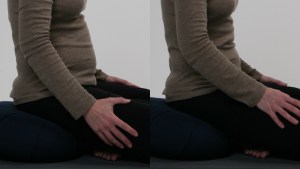 Sit comfortably. Let your whole body, especially the chest and diaphragm, relax and let go. Feel how the front and sides of the belly begin to gently expand as you inhale and relax back as you exhale. Don’t push your breath, Do let go and let your breath happen naturally. Lay your hands on you belly – see if they move slightly forward as you inhale, and slightly back as you exhale. You can also place your hands on your sides and feel for the same expanding-out and relaxing- in movement.
Sit comfortably. Let your whole body, especially the chest and diaphragm, relax and let go. Feel how the front and sides of the belly begin to gently expand as you inhale and relax back as you exhale. Don’t push your breath, Do let go and let your breath happen naturally. Lay your hands on you belly – see if they move slightly forward as you inhale, and slightly back as you exhale. You can also place your hands on your sides and feel for the same expanding-out and relaxing- in movement.
If you are unfamiliar with Taoist breathing or belly breathing, see the DVD Longevity Breathing and the section on breathing in Opening the Energy Gates of Your Body, both by Bruce Frantzis, for instructions on opening the breath in the front and sides of the belly.
2. Find the kidneys
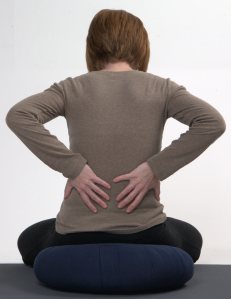 The kidneys are located in the mid-low back area of the body. Sit comfortably and bring your hands to the area of the kidneys. Gently rub and/or pat this area to awaken the sensation in this part of your body.
The kidneys are located in the mid-low back area of the body. Sit comfortably and bring your hands to the area of the kidneys. Gently rub and/or pat this area to awaken the sensation in this part of your body.
3. Warm-up the back
 Have small pillow and a rolled blanket or towel close-by. Lay on your back, with the pillow under your head. Silde the rolled blanket under your lower pelvis so that the pelvis tips back and up slightly as pictured. Adjust the size and placement of your props so that your feel completely comfortable bringing the knees in toward the chest.
Have small pillow and a rolled blanket or towel close-by. Lay on your back, with the pillow under your head. Silde the rolled blanket under your lower pelvis so that the pelvis tips back and up slightly as pictured. Adjust the size and placement of your props so that your feel completely comfortable bringing the knees in toward the chest.
Rest in this position allowing the whole back to relax and sink into the floor, letting the back of your body gently open and stretch like a hammock. Spend at least a few minutes here.
4. Open the breath in the kidneys
Roll onto your side to come out of the back warm-up position. Now that we’ve warmed up the breath and the body, we will focus on postures for kidney breathing. Try one or both of these options depending on how comfortable your body feels in each.
Laying down
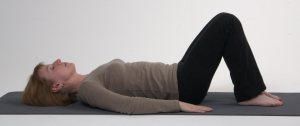 Lay on your back with your knees in the air and your feet on the floor. Now bring your attention specifically to the kidneys, and this part of the back. As you inhale, feel this part of the body gently pressing into the floor, and a gentle release of pressure as you exhale. Remember to keep relaxing to feel the breath here, as opposed to pushing the breath – let your breath breathe you.
Lay on your back with your knees in the air and your feet on the floor. Now bring your attention specifically to the kidneys, and this part of the back. As you inhale, feel this part of the body gently pressing into the floor, and a gentle release of pressure as you exhale. Remember to keep relaxing to feel the breath here, as opposed to pushing the breath – let your breath breathe you.
Sitting up
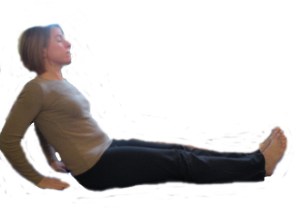 Sit with your legs straight ahead. Keeping your torso aligned and your spine straight lean back slightly, about 15 – 20 degrees; place your hands behind you with the fingers pointing toward your body (or in a fist if this is uncomfortable). Let the shoulders and arms relax as much as possible (if you have too much weight on the arms, or if the shoulders are very tense, make the amount you are leaning back smaller).
Sit with your legs straight ahead. Keeping your torso aligned and your spine straight lean back slightly, about 15 – 20 degrees; place your hands behind you with the fingers pointing toward your body (or in a fist if this is uncomfortable). Let the shoulders and arms relax as much as possible (if you have too much weight on the arms, or if the shoulders are very tense, make the amount you are leaning back smaller).
Now, as you breathe, focus on the kidney area, letting the breath open and expand as you inhale, and relax back toward the center on the exhale. Do this for a few moments.
Remember to relax into your breathing rather than forcefully inhaling/exhaling.
Wrap up
Spend a few moments sitting comfortably in a chair or cross-legged. Feel your breath expanding through the front, sides and back (kidney area) of the belly and see if you can relax and let go your whole back. You may even begin to feel your breathing in your upper back. Remember to let the chest be relaxed and still as you breath.
Finally, spend a last few moments just simply relaxing and letting go…
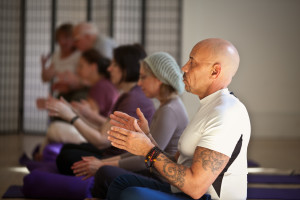 Would you like to open and breath more fully, increase circulation, reduce tension and connect with deep relaxation?
Would you like to open and breath more fully, increase circulation, reduce tension and connect with deep relaxation?
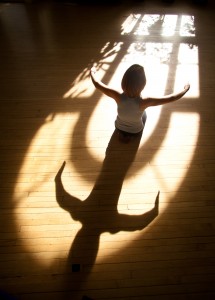
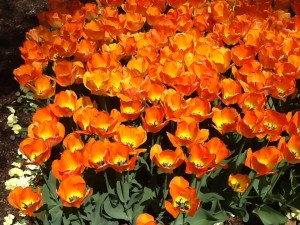
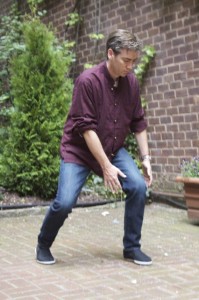
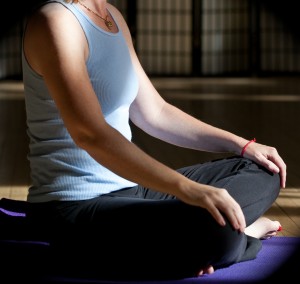
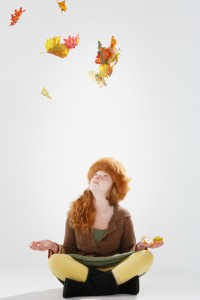

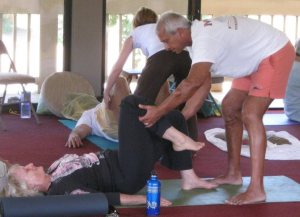





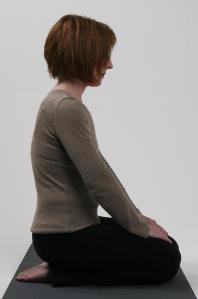 Students beginning with Longevity Breathing Yoga often ask about working with their breathing. The breath is central in LB Yoga as well as other arts we teach at Brookline Tai Chi.
Students beginning with Longevity Breathing Yoga often ask about working with their breathing. The breath is central in LB Yoga as well as other arts we teach at Brookline Tai Chi.